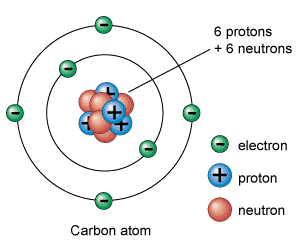Answers for Prepare for EYE : 5 Questions on Ionic Equations, Colours of Cations & Anions, Acids, Bases, Alkalis, Salts
Thursday, September 22, 2011
Q1 Zinc nitrate reacts with aqueous ammonia (NH4OH) to form a salt and a base. (i) Name the salt and the base. (ii) Describe the observations for the reaction. (iii) Write a chemical equation for the reaction (include state symbols). (iv) Write an ionic equation for the reaction.
(i)The salt formed is Ammonium Nitrate while the base formed is Zinc Hydroxide.
(ii)The alkali and soluble salt are aqueous solutions mixed together.After the reaction,a solid precipitate and an aqueous solution is formed.The solid precipitate is then removed as residue by filtration.When soluble salt reacts with an alkali,it will form a soluble salt and a precipitate.Therefore,when Zinc Nitrate reacts with Aqueous Ammonia,it will form Ammonium Nitrate and Zinc Hydroxide.And the Zinc Hydroxide formed is a white precipitate and it is soluble in excess aqueous ammonia to give a colourless solution.
(iii)Zinc Nitrate + Ammonium Hydroxide = Ammonium Nitrate + Zinc Hydroxide

(iv)

Q2 Ammonium sulfate is heated with sodium hydroxide. (i) Write a chemical equation (include state symbols) for the reaction. (ii) Describe a test for the gas.
(i) Ammonium sulfate + Sodium hydroxide = Sodium sulfate + water + ammonia

(ii)When Ammonium Sulfate is heated with Sodium Hydroxide,it produces ammonia gas.Ammonia gas can be tested by holding a piece of damp red litmus paper over the mouth of a test-tube because the hydroxide ions from ammonia gas will turn the damp red litmus paper to blue.
Q3 An unknown green solution is heated with a piece of aluminium foil and sodium hydroxide solution. (i) The gas produced turns damp red litmus paper blue. Name the gas evolved. (ii) This is a confirmatory test for an anion. Name this anion. (iii) Give a possible cation which gives the green solution.
(i)The gas evolved is Ammonia gas.
(ii)This anion is Nitrate ions.
(iii)This possible cation which gives the green solution is Iron(II) ion.
Q4 Sulfuric acid is titrated with potassium hydroxide in the preparation of potassium sulfate salt. (i) Explain why this method is recommended for the preparation for this salt. (ii) Write an ionic equation for the reaction.
(i)This method is known as titration.It is used because the acid,alkali and the salt are all soluble and colourless solution and this is preparing a Group (I) salt.Hence,we need titration method with an indicator to determine the end-point of the neutralisation between the acid and alkali,before we prepare the salt.
(ii)Sulfuric Acid + Potassium Hydroxide = Potassium Sulfate + Water

Q5 Excess zinc carbonate is added to hydrochloric acid in the preparation of zinc chloride salt. (i) Write an ionic equation for the reaction. (ii) Why excess zinc carbonate is used? (iii) Briefly explain how the zinc chloride crystals can be obtained.
(i)

(ii)Excess zinc carbonate is used to ensure that all the hydrochloric acid is completely reacted.When there are excess white zinc carbonate seen,the reaction has stopped.
(iii)To obtain zinc chloride crystals,the steps are as follows:
Step 1:Add excess zinc carbonate solid to a beaker of dilute hydrochloric acid until there is excess white zinc carbonate solid left behind.
Step 2:Filter to remove the excess unreacted zinc carbonate solid.
Step 3:Evaporate the zinc chloride solution to remove the water and make a saturated solution.
Step 4:The hot saturated solution form zinc chloride crystals when it is cooled.
This method is used to prepare soluble but not Group (I) salts.Excess zinc carbonate will ensure that all the hydrochloric acid is completely reacted.When there is excess white zinc carbonate seen,the reaction has stopped.Filter the mixture is to remove the excess unreacted zinc carbonate.Later the filtrate is evaporated to remove most of the water so that it becomes saturated.On cooling,the saturated zinc chloride will form crystals.Do not directly heat the crystals as it will remove water of crystallisation.


















